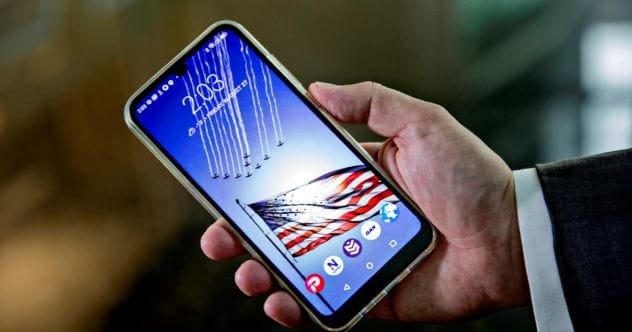A century ago, the idea of the internet would have sounded like magic. Cars were just becoming common, TVs weren’t invented, and smartphones were pure fantasy. Fast forward to today, and technology has transformed our lives in countless ways. Yet, it’s far from perfect. Tech failures happen daily, and some recent blunders have been truly spectacular. Let’s dive into ten tech fails and disasters that probably had their creators wishing for a do-over.
10 Juicero
Trendy folks love juice and gadgets, right? The global juice market is huge, nearing $200 billion annually. Kitchen gadgets also rake in over $17.6 billion each year. So, combining them seemed like a brilliant idea. Juicero, launched in 2017, promised a sophisticated $699 machine to press individual fruit packets with four tons of force, creating fresh juice. It even attracted a whopping $120 million from big-name investors.
The dream quickly soured when someone discovered you could just squeeze the pre-made packets by hand. Reporters tested this and found hand-squeezing was just as effective, if not faster, than the expensive machine. Even a price cut to $400 couldn’t save Juicero. The company went bankrupt just a few months after its disastrous debut.
9 Zillow’s AI
Zillow, a well-known real estate company, made headlines in 2021 for a major tech blunder. Many people thought Zillow was just a platform for real estate listings. However, the company was also in the business of buying and selling homes, using artificial intelligence (A.I.) to help them flip houses. They grew so confident in their A.I. that they let it make cash bids on properties.
This turned out to be a terrible decision. By November 2021, Zillow Offers had a backlog of 7,000 properties worth an estimated $2.8 billion. Their A.I.’s aggressive spending spree forced the company to shut down the algorithm and stop buying properties. It was a harsh lesson that a website’s A.I. probably shouldn’t be investing in real estate across an entire nation on autopilot.
8 Tesla Bot
Tesla is a household name, often thanks to Elon Musk’s headline-grabbing activities. Beyond the buzz, Tesla remains a leader in electric vehicles, frequently introducing innovative products. In August 2021, Tesla announced they were developing a humanoid robot. Musk stated the goal was to create a machine to perform dull, risky, or repetitive tasks for humans. So far, so good.
The problem was the reveal. Instead of showcasing an actual robot, Musk presented a person dressed in a spandex robot costume. The costumed individual then performed a dance, which many found cringeworthy. Whether it was intended as a joke or not, the press had a field day. Critics called it a publicity stunt, possibly to distract from other negative news. Regardless of the intent, it made a major corporation and its famous leader look rather silly.
7 The Freedom Phone
The Freedom Phone aimed to appeal to a specific political group, promising a smartphone free from “Big Tech” control, censorship, and leftist ideology. It boasted an uncensored app store and an anti-surveillance operating system. While catering to political beliefs can be profitable, the phone’s execution was deeply flawed.
It turned out the $499 Freedom Phone was merely a rebranded, inexpensive Chinese phone – the $119 Umidigi A9. The irony of a phone supposedly free from surveillance originating from China, a country known for monitoring, wasn’t lost on critics. The website lacked detailed specifications, the special OS was essentially a standard one from “Big Tech,” and its unregulated app store raised serious privacy concerns. Tech experts widely advised consumers to steer clear of this product, which still relied on American cell networks for service.
6 Quibi
Quibi was perhaps one of the biggest tech bombs of recent years, a short-form video platform that most onlookers saw failing from a mile away. It aimed to blend traditional TV and movies with fast-paced content like YouTube and TikTok. Shows were five minutes or less, perfect for a morning commute, and featured huge Hollywood names like Kevin Hart and Anna Kendrick, likely attracted by nearly $2 billion in investment funds.
Despite the hype and star power, Quibi lasted only about seven months. It was mobile-only, you couldn’t screencap its shows, and many found it too expensive for what it offered. Most importantly, the content was widely panned by critics and audiences alike. Almost every program on the platform received poor reviews, sealing Quibi’s fate as a memorable tech flop.
5 Cyberpunk 2077
When Cyberpunk 2077 launched at the end of 2020, it was one of the most eagerly awaited games in years, even featuring Keanu Reeves. It boasted nearly five million pre-orders and sold 13.7 million copies overall. This sounds like a massive success, but the reality was quite different.
The game was notoriously unstable and buggy, especially on older consoles like the PS4 and Xbox One, rendering it virtually unplayable for many. The backlash was severe, leading to over 30,000 refunds and the game’s temporary removal from the PlayStation Store. Lawsuits followed, and hackers even targeted the developer. Even when the game worked, many found it merely acceptable, failing to live up to the immense hype. It has since largely faded from public consciousness.
4 Coolest Cooler
Turning a simple cooler into a tech flop takes some doing. Yet, the Coolest Cooler managed just that. In 2014, it became one of Kickstarter’s most successful projects, raising an astonishing $13 million. This high-tech cooler promised to charge devices, and came with its own blender and Bluetooth speaker.
By 2019, the company filed for bankruptcy. The CEO blamed Chinese tariffs, but product reviews from 2016 had already exposed its flaws. Priced at $399, the cooler performed poorly. The blender was weak, with a battery life of only about four minutes. Many Kickstarter backers never received their cooler, or had to pay an extra $96 for it, while some who purchased it on Amazon received theirs sooner. It was a cool idea that ultimately melted down.
3 Galaxy Fold
The idea of foldable technology has fascinated us for years. Phones and tablets that bend could be a practical solution to shattered screens. Samsung jumped on this trend, unveiling the Galaxy Fold in 2019. This device, resembling a wallet, could be folded in half, offering double the screen capacity in a pocket-sized form. This innovative tech came with a hefty price tag of just under $2,000.
Unfortunately, things didn’t go smoothly. When reviewers got their hands on the phones, they failed spectacularly. Many reported that the folding displays malfunctioned within a day or two. Some units developed bulges, while others only worked on one side of the fold. Some reviewers inadvertently damaged the phone by removing a protective layer they didn’t realize was crucial. Samsung initially claimed to have sold one million units but later retracted this, admitting it was a sales target. The CEO eventually acknowledged that the Fold was released too soon.
2 Breached Sex Toys
We all know hackers are a constant threat, and anything connected to the internet needs protection. This includes a somewhat unexpected category: sex toys. In a growing market, some adult toys connect to the internet for remote control by other users. The problem? Many of these devices lack basic security.
The most obvious risk is hackers accessing personal data, which could be embarrassing information about usage habits. But the dangers can be more severe. One Twitter user reported losing NFTs and cryptocurrency after their system was hacked. They suspected a sex toy, plugged in “to charge” on their network, was the vulnerability. It’s a stark reminder that all connected devices, no matter how personal, need robust security.
1 WeWork
WeWork marketed itself as a digital firm helping startups find shared office space. In reality, it was primarily a commercial real estate company that tried to appear more tech-focused than it was. The company would lease large office buildings long-term, then divide them into smaller spaces for short-term tenants. This seemingly simple concept initially garnered a staggering $47 billion valuation, with SoftBank investing $8 billion.
However, WeWork became infamous for its financial mismanagement and eccentric leadership. The CEO reportedly worked barefoot and took tequila shots in the office, while his wife once fired someone for having the “wrong energy.” The company’s losses were colossal; in 2018, it lost $1.9 billion on $1.8 billion in sales. A planned IPO in 2019 was a disaster and had to be canceled. Even the CEO’s departure couldn’t restore confidence. In the first quarter of 2021 alone, WeWork lost over $2 billion, cementing its place as a massive tech-adjacent cautionary tale.
These stories show that even with brilliant ideas and huge investments, the path of technology is littered with potential pitfalls. From overambitious AI to poorly executed hardware, these failures serve as reminders that innovation often comes with risk.
What other tech fails do you remember? Leave your comment below!










